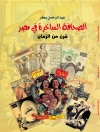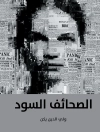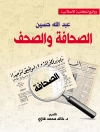The Web has been with us now for almost 25 years. An integral part of our social, cultural and political lives, ‘new media’ is simply not that new anymore. Despite the rapidly expanding archives of information at our disposal, and the recent growth of interest in web history as a field of research, the information available to us still far outstrips our understanding of how to interpret it.
The SAGE Handbook of Web History marks the first comprehensive review of this subject to date. Its editors emphasise two main different forms of study: the use of the web as an historical resource, and the web as an object of study in its own right. Bringing together all the existing knowledge of the field, with an interdisciplinary focus and an international scope, this is an incomparable resource for researchers and students alike.
Part One: The Web and Historiography
Part Two: Theoretical and Methodological Reflections
Part Three: Technical and Structural Dimensions of Web History
Part Four: Platforms on the Web
Part Five: Web History and Users, some Case Studies
Part Six: The Roads Ahead
Зміст
Foreword: The Web as Counterpart – Steve Jones
Introduction – Niels Brügger & Ian Milligan
Part 01: The Web and Historiography
Chapter 1: Historiography and the Web – Ian Milligan
Chapter 2: Understanding the Archived Web as a Historical Source – Niels Brügger
Chapter 3: Existing Web Archives – Peter Webster
Chapter 4: Periodizing web archiving: Biographical, event-based, national and autobiographical traditions – Richard Rogers
Part 02: Theoretical and Methodological Reflections
Chapter 5: Web History in Context – Valérie Schafer & Benjamin G. Thierry
Chapter 6: Science and Technology Studies Approaches to Web History – Francesca Musiani & Valérie Schafer
Chapter 7: Theorizing the Uses of the Web – Ralph Schroeder
Chapter 8: Ethical considerations for web archives and web history research – Stine Lomborg
Chapter 9: Collecting Primary Sources from Web Archives: A Tale of Scarcity and Abundance – Federico Nanni
Chapter 10: Network Analysis for Web History – Michael Stevenson & Anat Ben-David
Chapter 11: Quantitative Web History methods – Anthony Cocciolo
Chapter 12: Computational Methods for Web History – Anat Ben-David & Adam Amram
Chapter 13: Visualizing Historical Web Data – Justin Joque
Part 03: Technical and Structural Dimensions of Web History
Chapter 14: Adding the Dimension of Time to HTTP – Michael L. Nelson & Herbert Van de Sompel
Chapter 15: Hypertext Before the Web – or, What the Web Could Have Been – Belinda Barnet
Chapter 16: A historiography of the hyperlink: Periodizing the web through the changing role of the hyperlink – Anne Helmond
Chapter 17: How Search Shaped and Was Shaped by the Web – Alexander Halavais
Chapter 18: Making the Web Meaningful: A History of Web Semantics – Lindsay Poirier
Chapter 19: Browsers and Browser Wars – Marc Weber
Chapter 20: Emergence of the Mobile Web – Gerard Goggin
Part 04: Platforms on the Web
Chapter 21: Wikipedia – Andy Famiglietti
Chapter 22: A Critical Political Economy of Web Advertising History – Matthew Crain
Chapter 23: Exploring Web Archives in the Age of Abundance: A Social History Case Study of Geo Cities – Ian Milligan
Chapter 24: Blogs – Ignacio Siles
Chapter 25: The History of Online Social Media – Christina Ortner, Philip Sinner & Tanja Jadin
Part 05: Web History and Users, some Case Studies
Chapter 26: Cultural Historiography of the ′Homepage′ – Madhavi Mallapragada
Chapter 27: Consumers, News and a History of Change – Allie Kosterich & Matthew Weber
Chapter 28: Historical studies of national web domains – Niels Brügger & Ditte Laursen
Chapter 29: The Origins of Electronic Literature as Net/Web Art – James O′Sullivan & Dene Grigar
Chapter 30: Exploring the memory of the First World War using web archives: web graphs seen from different angles – Valérie Beaudouin, Zeynep Pehlivan & Peter Stirling
Chapter 31: A History with Web Archives, Not a History of Web Archives: A History of the British Measles-Mumps-Rubella Vaccine Crisis, 1998-2004 – Gareth Millward
Chapter 32: Religion and Web history – Peter Webster
Chapter 33: Hearing the Past: The Sonic Web from MIDI to Music Streaming – Jeremy Wade Morris
Chapter 34: Memes – Jim Mc Grath
Chapter 35: Years of the Internet: Vernacular creativity before, on and after the Chinese Web – Gabriele de Seta
Chapter 36: Cultural, political and technical factors influencing early Web uptake in North America and East Asia – Mark Mc Lelland
Chapter 37: Online pornography – Susanna Paasonen
Chapter 38: Spam – Finn Brunton
Chapter 39: Trolls and Trolling History: From Subculture to Mainstream Practices – Michael Nycyk
Part 06: The Roads Ahead
Chapter 40: Web archives and (digital) history: a troubled past and a promising future? – Jane Winters
Про автора
Ian Milligan is an Associate Professor of History at the University of Waterloo, where he teaches Canadian and digital history. Ian′s work explores how historians can use web archives, the large repositories of cultural information that the Internet Archive and many other libraries have been collecting since 1996. He has published two books: the co-authored Exploring Big Historical Data: The Historian’s Macroscope (2015) and Rebel Youth: 1960s Labour Unrest, Young Workers, and New Leftists in English Canada (2014). In 2016, Ian was named the Canadian Society for Digital Humanities/Société canadienne des humanités numériques (CSDH/SCHN)’s recipient of the Outstanding Early Career Award.












